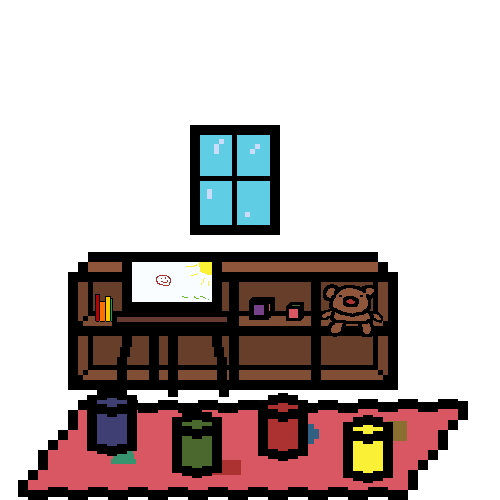Your donation will support the student journalists of The Tide, Richard Montgomery High School's student newspaper. Your contribution will allow us to purchase equipment and cover our annual website hosting costs.
Maryland allows child care centers to expand capacity
November 16, 2020

Graphic Courtesy of Ravindu Gunasekara
The Maryland State Department of Education (MSDE) announced that Maryland child care centers were to open to full capacity on Thursday, Oct. 8.
The Maryland State Department of Education (MSDE) announced that Maryland child care centers were to open to full capacity on Thursday, Oct. 8. Now, there can be as many as 30 children per facility with two teachers for every 15 students.
This policy was an effort both to stimulate the economy and help parents who used to rely on child care providers before the pandemic.
“The COVID-19 pandemic changed the landscape of child care more dramatically than any other phenomenon in the history of our State,” the MSDE stated in their recovery plan.
Over the past few months, Maryland has been opening child care centers on a gradual basis. The state began with Pre-Recovery, in which only the children of essential workers attended programs. Then, in three phases, Maryland planned full recovery; the third phase is now in action.
“It’s a game-changer,” Richard Huffman, CEO of the Celebree day care and education program, told The Baltimore Sun. “It allows for us to do what we do best, and it allows more parents to go back to work. It’s going to be a huge part of the state’s recovery.”
Child care closings took a toll not just on providers but on parents. Many struggle to balance caring for children and completing their work.
“It’s a critical issue,” Governor Larry Hogan told Child Care Aware of America in July, when child care centers were partially open. “How do you protect kids, and provide parents some opportunity while keeping those youngsters safe? Certain people, especially at the lower end of the socioeconomic chain, have to show up for work; they can’t just work from home, and they’ve got young kids. In some cases there are single parents that have to take care of them.”
Like many other teachers at Richard Montgomery High School, Amy Huque, the World Languages resource teacher, is a parent to young children. She is currently sending her children to child care centers. “While it was definitely nerve-wracking sending my children into group situations at first, it was the right thing for my family,” Huque said. “Child care is absolutely essential for working families, regardless if the parents are working at home or on-site.”
Social studies teacher John Pearce, also a parent, keeps his children at home. “I don’t necessarily think it’s wise, opening up, from just a purely economic perspective. At the same time, I think it’s necessary because there’s a lot of parents that don’t have a lot of options,” Pearce said. “I’m very fortunate to be able to keep my kids home, and I know that a lot of parents don’t have that.”
According to Huque, parenting and working are stressful matters. “Meeting the social, emotional, academic, and physical needs of our children while trying to attend meetings and do our work was very difficult and stressful,” Huque said. “I would wake at 5 a.m. to get 2-3 hours of work in before the children woke up and frequently worked from 9-11 pm after the kids were in bed.”
During the pandemic, some busy parents have also resorted to sending their children to unlicensed child care providers who do not meet state regulations. The reopenings will therefore also protect children from such risks. According to WTOP, at least 13 Maryland children have died from 2010-2014 due to abuse and lack of safety measures from unlicensed child care providers.
“There are no background checks, no oversight and parents cannot be sure their children are in a safe environment,” Maryland State Superintendent Karen B. Salmon said of these providers, according to CBS Baltimore.
But how safe will these reopenings be? “Research suggests that pediatric coronavirus disease 2019 (COVID-19) cases might be less severe than cases in adults,” the MSDE writes in their recovery plan. “Today, daily child care operations include increased health and hygiene measures such as wearing masks, conducting temperature checks, frequent hand-washing, on-going sanitation, and practicing social distancing.”
As the second wave of the pandemic approaches, the benefits and logistics of public reopenings remain a question. “If we felt like the numbers were safe, we would be willing to send them back, but we would have to kind of look at what the situation was with the pandemic,” Pearce said.
“Provided that the child care provider is following safety protocols, taking COVID seriously, and maintaining honesty and open communication with families, I fully support child care centers being fully open,” Huque said. “Full-time working parents cannot meet the needs of their very young children while simultaneously working. It is not good for the child, the parents, or the work.”